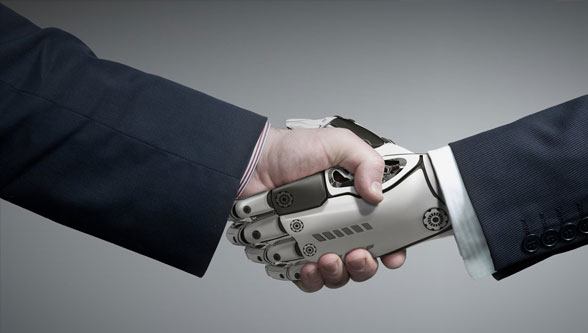Manufacturers have lots of options at their disposal when it comes to investing in heavy equipment, including robots and automated systems. Pneumatic robots and cobots are just one option among several, but they offer a great mixture of flexibility, precision, safety, cost-effectiveness and other attributes.
They’re not without their potential disadvantages and challenges, depending on the application and manufacturing environment. Many of these can be overcome or compensated for. Even if they don’t solve 100% of every problem in manufacturing, there are many good reasons why they’re a popular choice for performing repeating, high-accuracy lifting, moving and pick-and-place operations.
What Are the Benefits and Advantages of Pneumatic Robots?
Pneumatic robots are different from robots with hydraulic systems or electric motors in that they receive locomotion from compressed air rather than from electrical-mechanical energy or hydraulic fluid. Pneumatic systems, including robots, require the following elements to function:
- Compressor: Uses electricity, gasoline or propane to gather air and compress it so it can complete a movement, lift something or generate gripping force
- Reservoir: Stores a limited amount of compressed air so there is no gap between the robot’s actions as the compressor spins up again
- Valves and circuits:Controls the amount of air being supplied to the robot or the air-powered tool
- Actuators: Puts the compressed air to work to produce movement or gripping force by turning the potential energy generated by the compressor into useful kinetic energy
Pneumatic technology is elegant in its simplicity. In fact, nature thought of it first — the spider and other creatures use a kind of natural pneumatic action to move their legs and appendages.
There are lots of ways for manufacturers to put pneumatic robots to use. Heavy lifting and pick-and-place operations that are repeatable, and which require known and consistent levels of force, are ideal choices for incorporating automation courtesy of pneumatics and robotic arms. Even now, there are autonomous robots that can navigate machine shops and factory floors while lifting and transporting a variety of materials to and from shelves or among assembly lines.
Assembly lines are the other obvious choice for bringing pneumatic robots into the mix. They can lift and hold heavy workpieces in place while laborers perform detail-oriented work like welding and inspecting.
Apart from manipulator arms and grippers, pneumatics serve various other functions within manufacturing, often in conjunction with robotics. This includes supplying power to precision drills, air brakes, nail guns, vacuum pumps, and other tools and equipment.
1. Smooth Movement and Wide Range of Gripping Force
Smooth and fluid movements are the chief advantage of pneumatic robotic systems. As a testament to that fluidity, pneumatics are typically the power source of choice for animatronics at theme parks and film sets. In manufacturing, the smoother the movement, the lower the risk of a damaged workpiece.
Pneumatic robots are also known for their superior range of gripping force, which can be taken advantage of using an equally diverse range of “fingers” and gripping elements.
2. Minimal Maintenance Required
Like anything else, getting the longest life out of a pneumatic robotic means buying for quality the first time. Even so, pneumatic robots usually require less maintenance than those featuring other types of locomotion and cost less to repair once a part wears out.
Another related advantage is that pneumatic robotic systems remain functional in a wide variety of extreme temperature conditions and even corrosive environments. This resilience against the elements also aids in keeping maintenance to a minimum and helps maximize the useful lifetime of the system.
3. Fewer Safety Concerns
Pneumatic robots are advantageous in factories and other settings where the risk of fires and explosions is especially pronounced. Compressed air is stored under pressure, but the supply can easily be cut off during a safety incident without cutting power to the rest of the facility.
4. Greater Precision
The most recognizable type of pneumatic robot is the manipulator arm, which often comes with a gripping hand attached. With pneumatics, tools like these can reproduce programmed movements with precision down to 2 millimeters and repeatability of .02 millimeters.
5. Allows More Compact Designs
Compared with hydraulics, robotic systems powered with pneumatics can be more compact and easily designed to fit into limited workspaces. Electromechanically powered robots require places on their frame for mounting bulky electric motors. Hydraulic systems require storage tanks for the ethylene glycol or mineral oil that provides locomotion.
The smaller footprint of pneumatic systems is a major advantage when designers need their robots to fit into compact spaces. They are ideal for performing very small, precise motions where a bulky frame isn’t an option.
Are There Any Downsides or Challenges With Pneumatic Robots?
The benefits are clear, but companies still run into challenges when it comes to navigating some of the compromises inherent in pneumatic systems. Here are some of those challenges:
1. Potentially Higher Operating Costs
Although the maintenance requirements and day-onecosts for pneumatic robots can be more manageable than the alternatives, these systems generally carry higher operating and ownership costs over the longer term.
A major factor here is the cost of energy. Around 75% of the operating expense for pneumatic systems comes from electricity, while the other 25% is for compressed air, maintenance and the equipment itself.
2. Inferior Speed Control
As mentioned, pneumatic robotics provide smooth and very precise movements down to 2 millimeters at a time. For many applications, this is plenty. What pneumatics don’t offer is speed control, which can limit how useful they are in some circumstances. Pneumatic actuators are either on or off, unlike electric motors, which provide more granular control over travel speed.
For businesses that want the advantages of pneumatics but have specific speed control requirements, hybrid systems are available that combine pneumatics with electric motors.
3. Susceptible to Condensation
Pneumatic robots run on compressed air, which tends to retain moisture. Condensation is another one of the potential downsides of operating these systems. If the supply of air has suboptimal pressure or humidity, it can introduce moisture into the system and cut its lifespan short.
To reduce or eliminate this problem, many facilities that use pneumatics incorporate drying systems to ensure the air providing power to everything is as moisture-free as possible.
Pneumatic Robotics and the Opportunity of Automation
With pneumatics and robotics, it’s becoming easier for companies in a range of manufacturing verticals to automate their precision work and heavy lifting. Pneumatics aren’t perfect for every situation, but they are a very attractive choice for some of the most cutting-edge robotic designs in use today.
Article by —

Megan Ray Nichols
Freelance Science Writer
[email protected]
www.schooledbyscience.com/about
Read More Articles
[gap height=”20″]



